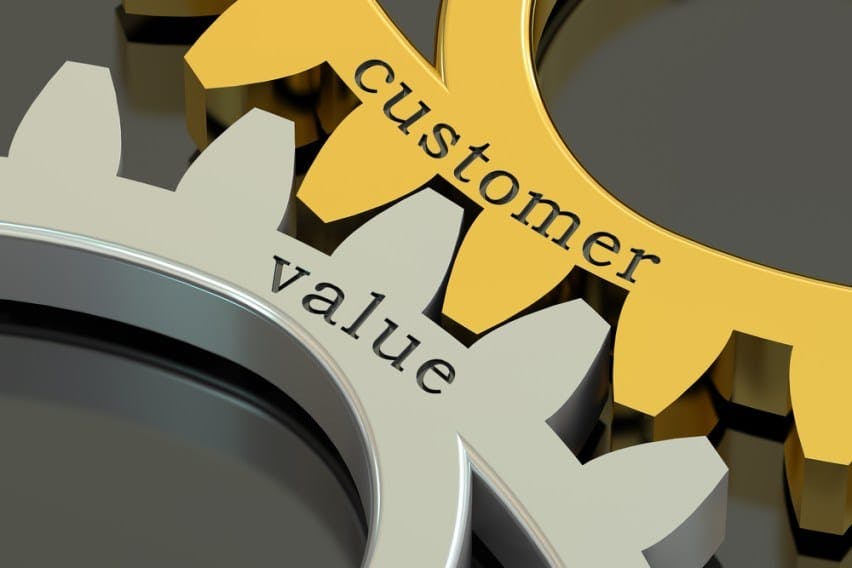
How B2B Customers Derive Value
In this complex setting, let’s look at how customers understand and derive value. First, value is conveyed and derived through cost. This includes cost of the product, but also includes payment terms, transactions costs and other elements. When people think about value, they typically quickly associate price and value. However, value also includes many non-price attributes as well. Value is also derived from how the product performs, including delivery, service and support. Lastly, there is potential value that is derived from having access to a broad product line, benefitting from the image or cache of a supplier, and gaining access to new markets through a supplier because of their plant locations or market knowledge.

So, value is created in multiple ways beyond just price, and the dimensions of value include tangible and certain aspects such as price and quality, as well as intangible and future aspects such as leveraging a broad product line and gaining access to new markets.
Capturing all of this value through higher prices is a challenging task. In fact, the highest potential gain to customer is in benefits that are most difficult to capture. But some leading companies have figured out how to do this. Look at some comments that we have heard from customers of our clients. They are expressing exactly what we’re illustrating here – that they are willing to pay a premium price for supplier product knowledge, customer service, and long-term stability – some of which may not immediately result in profit, but may, in the future, create new business opportunities.

Value, then, means more than just price. However, extracting all the value that a supplier has to offer can be challenging.
We noted earlier that a product has many attributes or features that describe it. Each attribute has the potential to create value – if the user can successfully extract it. The attribute must be converted to a benefit or it has no value – kind of like a tree falling in the forest. Let’s look at a simple example of a filter.

A product consists of multiple attributes—features that directly or indirectly allow the user to extract value
- May be product or service, tangible or intangible, known or perceived
- Must convert to a benefit or it has no value
That filter consists of fabric that must be manufactured. There is technical knowledge and competencies built over time that support the manufacturing process and which results in a finished product more suitable for certain applications. The supplier also offers production capacity and expertise in injection molding the case for the filter that allows the customer to handle it, inventory it, and use it. The filter is of no value if it is not at the customer when needed. It must be delivered on time and, to maintain and enhance value, include an appropriate warranty and supporting customer service. All of these attributes or elements add to the overall value of a product.
Each customer uses the same product somewhat differently. That means that value can differ by customer. As we have noted, unused attributes do not contribute value. A supplier offering overnight delivery offers no incremental value to a customer that doesn’t need it for three days. So, our example filter can have very different value in each customer plant where it is used.

Because it is translated by the customer/user, value is different for each customer and use situation
- Unused attributes contribute no value
- Time is critical – speed to market, time of use
Importance is a measure of how effectively attributes are translated into benefits; consequently, it differs by segment. The key take-away here is that value is determined by customer segment and by use.
Sometimes customers have difficulty articulating all of the attributes they need or desire in a product. It is frequently simpler to talk only about price. Price is also an easy weapon for buyers to pick up and pound on salespeople. We need to be cautious though not to confuse this type of customer feedback with the need to lower price. For example, here are some quotes from long-term customers who buy the majority of product from a company we’ll call ABC.
“[Competitor] currently has the best price for materials.”
“Pricing sometimes lags behind competition. Although [ABC] is usually responsive to pricing issues, I feel that a company of [ABC]’s size and reputation should be a leader instead of a follower in all areas, including pricing.”
“[ABC] is not as responsive to changing market prices as [competitor]. I am still not getting pricing that some of my competitors are getting.”
Each of these customers speaks about the high prices of ABC relative to competitors. The interesting fact is that these quotes come from long-term customers – they continue to buy from ABC because they receive superior value. Price is easy to talk about, but it is only one of the attributes that contribute to the buying decision. Sales people are particularly susceptible to this diversionary tactic.
Price does indeed communicate the relative value level. A Rolls Royce is not priced like a Kia. And in sectors that are more toward the commodity end of the spectrum, price is certainly a larger component of value. Even in that setting, there are incremental margin and volume gains to be had through an understanding of customer value. For a sustainable business in a competitive environment, price must be above total costs, but cannot exceed perceived value. This is illustrated in the diagram here.

“I haven’t really looked for anything else as we are happy with the product and the service.”
“The only area of dissatisfaction that we have at times in when [ABC]’s perception of their value and ours do not match causing an issue with our acceptance of their pricing.”
“[ABC] is like us, not the ‘low price leaders;’ Service and reputation is worth something.”
Again, actual comments from customers illustrate this concept. As long as price does not exceed the value customers perceive that the product offers, it is a fair deal. In the customer’s mind, they are getting more than they paid for. Value includes price, but it is much more. And a company cannot maximize price without an understanding of perceived value.


